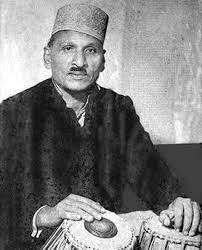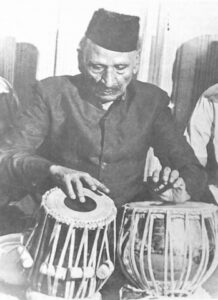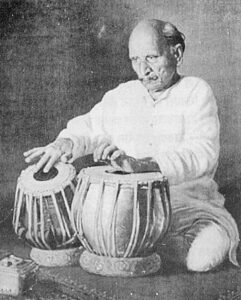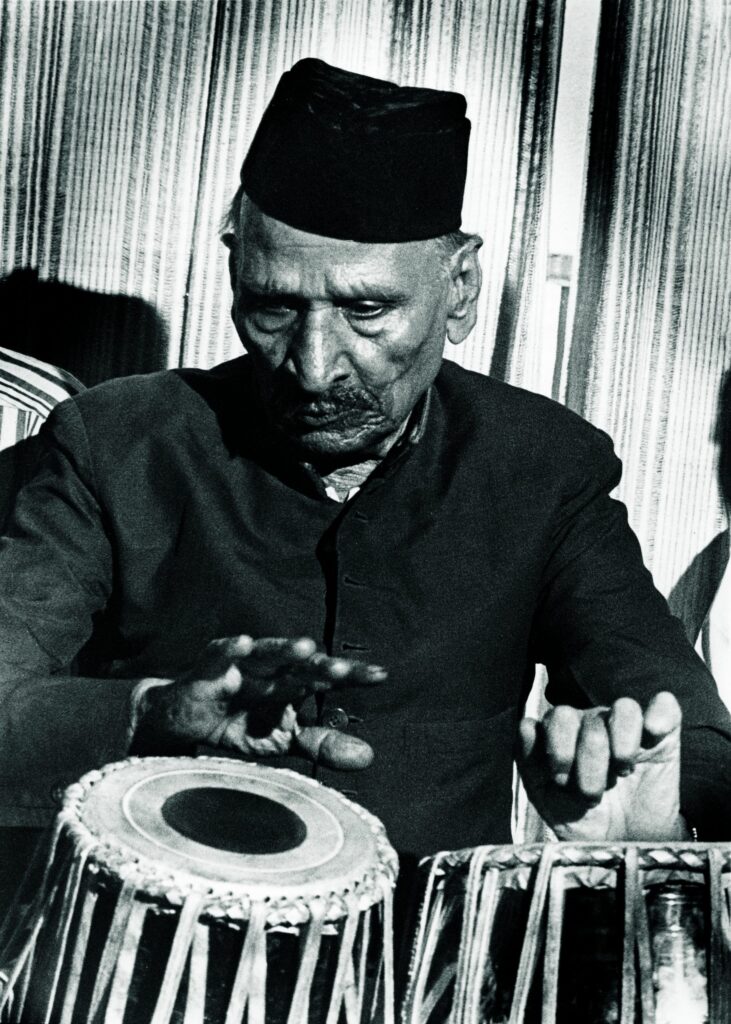Ahmed Jan “Thirakwa” was one of the most decorated tabla players of all time. He was as patient as a clamshell under the sea with his riyaz and as persistent as the sun in Lucknow on a June afternoon with his discipline for the instrument. Looking back, Ahmed Jan paints quite a picture with his signature black sherwani, a Rampuri topi, the blackened moustache, the surma-lined eyes, the silver-capped walking stick, the polite aadab-arz or meherbani aapki, his courteous manners, and his mastery over the tabla.

Born in 1891 in Moradabad, Uttar Pradesh, to a family of musicians, Ahmed Jan trained as a vocalist under Ustad Mithoo Khan ever since he was a child. His father, Hussain Bux, was a well-known Sarangi player and used to school him on playing the Sarangi. Soon enough, he realised that the tabla would be a better instrument for his son. He then started taking lessons from his uncles Sher Khan, Faiyaz Khan, and Baswa Khan. Later, he moved to Bombay at the age of 12 to train under the great Ustad Munir Khan of Meerut. He relentlessly trained for 16 hours a day under his guru, and a young Ahmed in no time became his guru’s beloved shagird. It was from his guru’s father that he got his name, “Thirakwa,” which translates to how his fingers danced on the table like a flash of lightning in the sky. Besides Thirakwa, the other reputed tabla players of Munir Khan’s Gharana have been Ustad Amir Hussain (nephew of Munir Khan), Ghulam Hussian, Shamsuddin, and others.
 After a highly successful debut at the age of 16 in Khetwadi, Bombay, he joined Bal Gandharva’s theatrical company and started touring the north on high demand. In 1936, the maestro was appointed as Rampur’s court musician, a title that he held for 30 years. Thirakwa’s name became unmatched by any other tabla player. He made history by playing the tabla as a solo instrument at a time when it was only used and accepted as an accompanist. He was an ardent pupil and the only one of his time to train and master not one but four gharanas or bajs of the instrument: Delhi, Farrukhabad, Ajrada, and Lucknow. By the age of forty, he had become the ideal that every tabla player aspires to. He was perfect in both solo and accompaniment. Thirakwa Saheb altogether gave a new dimension to the solo presentation of tabla. He gave it a sequence, just as a singer or a sitarist would develop a raga.
After a highly successful debut at the age of 16 in Khetwadi, Bombay, he joined Bal Gandharva’s theatrical company and started touring the north on high demand. In 1936, the maestro was appointed as Rampur’s court musician, a title that he held for 30 years. Thirakwa’s name became unmatched by any other tabla player. He made history by playing the tabla as a solo instrument at a time when it was only used and accepted as an accompanist. He was an ardent pupil and the only one of his time to train and master not one but four gharanas or bajs of the instrument: Delhi, Farrukhabad, Ajrada, and Lucknow. By the age of forty, he had become the ideal that every tabla player aspires to. He was perfect in both solo and accompaniment. Thirakwa Saheb altogether gave a new dimension to the solo presentation of tabla. He gave it a sequence, just as a singer or a sitarist would develop a raga.
Although Thirakwa was essentially a soloist, there had hardly any leading soloist or instrumentalist in the last five or six decades whom he had not accompanied in the course of his long and distinguished career spanning many generations. Among the unforgettable maestros he accompanied at the table were Ustad Allahbande Khan, Rajab Ali Khan, Alladiya Khan, Wahid Khan, and Allauddin Khanand.

After completing his time in the court of Rampur, Ahmed Jan moved permanently to Lucknow and was appointed as a professor and the Head of the Faculty at the Bhatkhande College of Music. Even after he retired, he was closely associated with this institution as an Emeritus Professor. He passed away in 1976 in Lucknow, depriving the world of his beautiful music but inspiring his legacy to live on for more tabla wizards to come.


